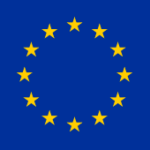The European Accessibility Act (Directive 2019/882) mandates accessibility for persons with disabilities in certain everyday products and services. It aims to benefit at least 87 million people, including older individuals and those with temporary impairments. By enhancing access to public transport, banking services, computers, TVs, e-books, online shops, and more. Ensuring accessibility is crucial for enabling equal participation in society for persons with disabilities.
What is the main purpose of the European Accessibility Act?
The Act ensures EU market products and services are accessible to persons with disabilities. This benefits at least 87 million people, including older individuals and those with temporary impairments. It improves access to public transport, banking services, and more, fostering equal participation in society for persons with disabilities.
The main products covered are:
- computers and operating systems
- smart phones and other communication devices
- TV equipment related to digital television services
- ATMs and payment terminals
- E-readers
- Ticketing and check-in machines
Services covered include:
- Phone services
- Banking services
- E-commerce
- Websites, mobile services, electronic tickets and all sources of information for air, bus, rail and waterborne transport services
- Ebooks and dedicated software
- Access to Audio-visual media services (AVMS)
- Calls to the European emergency number 112
The Directive will ensure that persons with disabilities will benefit from a greater supply of accessible products and services. This will enable them to participate more actively in society and the economy. It also contributes to the implementation of the European Pillar of Social Rights. This is an EU-wide drive to deliver new and more effective rights for citizens. The focus is in particular, inclusion of people with disabilities.
In addition, manufacturers and service providers will be able to sell and distribute their products and services across the EU. They need not adapt them to divergent national provisions. Imported products and services will also have to comply with these requirements.
What is the timeline for the Directive’s implementation?
The EU member states will have three years till June 28, 2022 to implement the Directive as national law. They will have a further three years (i.e. up to June 28, 2025), to apply those provisions.
The members introduce a number of transitional measures to include products and services. The measures grant products and service contracts in use before June 28, 2025 an additional five years for compliance. The transition period for self-service terminals is 20 years after their entry into use. However, in most cases, the Act requires compliance with the Directive from June 2025.
The European Accessibility Act requirements
The European Accessibility Act identifies the product features and service features that must be accessible for persons with disabilities. The Act uses functional EU accessibility requirements. It does not impose detailed technical restrictions to make products and services accessible. This allows room for innovation and flexibility.
The Act mandates accessible interfaces for products, offering various communication alternatives like flexible magnification, volume adjustment, etc. Websites must display accessibility information, enabling users to navigate effectively with assistive devices.
The Act benefits both companies and customers. Companies, especially SMEs, can easily trade within the EU and gain certainty in selling their products. Customers benefit from innovation, accessing a more inclusive range of products at competitive prices.
Common accessibility requirements also aid everyone in low-light or high-noise environments. For instance, ATMs with visual and audible signals benefit all users.
What can users do when services or products do not respect the new rules?
The European Accessibility Act puts in place a robust mechanism to ensure compliance with its accessibility requirements. It requires EU Member States to ensure:
- regular compliance checks
- Review of complaints and follow up
- companies take necessary corrective actions
- people know which authority to turn to with their complaint
- customers can file complaints before national courts or authorities if services or products do not respect the new rules
What will change for manufacturers and publishers?
Starting June 28, 2025, businesses must supply the European market with products and services compliant with the Directive’s accessibility requirements. In doing so, they will get access to the internal market as a whole. Businesses will also have to comply with certain reporting obligations. For example, they will have to inform consumers about the accessibility features of their products and services.
European Accessibility Act and the Marrakesh Treaty
The Act complements the WIPO-administered Marrakesh Treaty, facilitating access to published works for individuals with visual impairments or print disabilities. Its main goal is to ensure that newly created e-books have built-in accessibility features, like structured text and image descriptions. Information about these features must be available to customers with disabilities to make informed purchases.
The Directive applies to all stakeholders in the publishing supply chain, including manufacturers, service providers, and consumers. It covers all new books published after June 28, 2025. And also encourages best practices for enhancing e-book accessibility beyond legal requirements.
What are the exemptions or exceptions in the Directive?
The exceptions under the Directive include: micro-companies and Small and Medium-Sized Enterprises (SMEs). The Directive contains a number of other safeguards to benefit businesses. For example, the implementation of accessibility requirements is compulsory only to the extent that it does not impose a disproportionate burden or does not result in the fundamental alteration of the product or service. Moreover, the Directive requires an e-book publisher to provide accessible e-books but does not require the publisher to produce paper versions of books in Braille.
How will the Directive be enforced?
First, businesses will have to declare compliance. Then market surveillance authorities and those authorities responsible for compliance of services will check that everything is in order. Ultimately, consumers will be able to take action under national law before the courts.
Each member state will be responsible for establishing its own market surveillance authority and the authorities responsible for compliance of services. It’s still too early to say who they will be and the organizational structure. But it is their duty to inform the public about these authorities, their responsibilities and the decisions they take when they become operational.
What do businesses have to do to implement the act?
Businesses selling products and services covered by the Act must check the national laws and regulations transposing the European Accessibility Act in their country for compliance requirements. Businesses have three years to ensure that their products and services comply with the common EU accessibility requirements.
How will the EAA affect your business?
The EAA is for businesses based in the European Union or companies whose audience is based in the EU. If your business is solely via website, ensuring that your web content is accessible according to the Web Content Accessibility Guidelines (WCAG) makes you compliant. For physical products, digital devices, etc. meant for the EU market, you have to adhere to the EAA’s accessibility requirements for products and services.
The EU believes that this directive will not only help people with disabilities but will also provide businesses with a single set of rules regarding accessibility in the EU, leading to:
- Reduced costs
- Seamless cross-border trading
- A larger market (with the inclusion of the 135 million people with disabilities in the EU)
There’s also the angle of boosting your Corporate Social Responsibility profile (and a better brand image by default). You can accomplish this by providing accessible products to your target audience, reducing barriers (and improving user experience) and hiring based on standards of equality.
What should you do to ensure compliance with the EAA?
Depending on the scope of your business, there are a number of things you can do. As mentioned earlier, compliance with the Web Content Accessibility Guidelines (WCAG) is paramount. This will make your content accessible to people with disabilities.
Here are a few other things business can do to ensure compliance with the EAA:
- Talk to web accessibility experts
- Educate your staff on web accessibility best practices
- Budget and plan for web accessibility upgrades
- Stay up-to-date on the EAA as the implementation unfolds
Final Thoughts
The European Accessibility Act requires member states to pass necessary accessibility laws by June 28, 2022. The Directive affects every company that does business in the European market and must prepare by making internal modifications to the way they operate. Web accessibility remains key to complying with the EAA. The EAA aims to improve the operation of the EU market for accessible products and services by removing barriers created by divergent rules in the member states. By ensuring equal access, the EAA hopes to bridge gaps in the labor market for people with disabilities as well as improve their overall quality of life.









